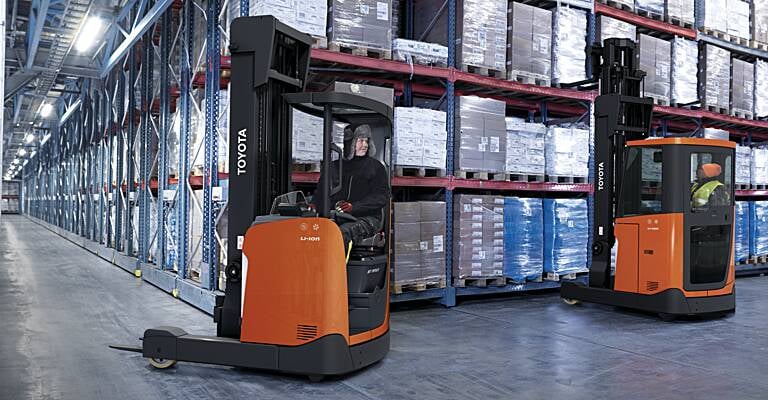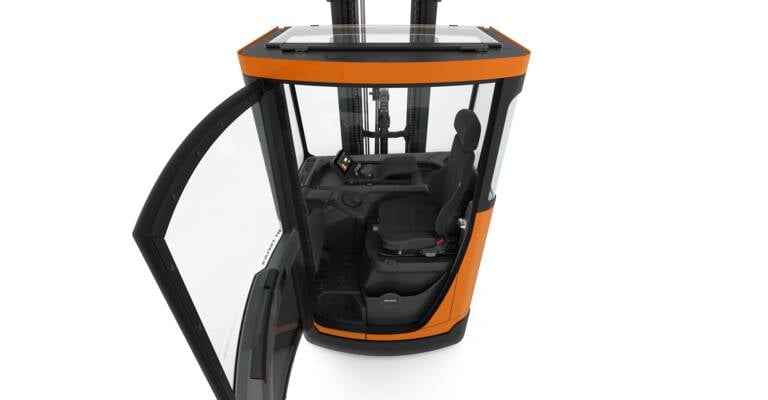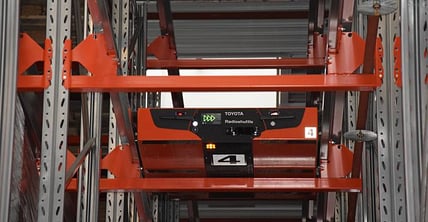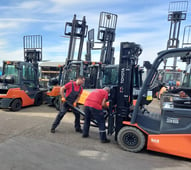One of the main challenges in cold environments is to maintain the right temperature for products, frozen or chilled, while keeping workers and equipment warm enough to keep efficiency high. To maximise space utilisation and reduce downtime, whilst retaining flexibility, you need to have access to the right equipment and lean solutions to keep operating costs under control.
To improve these and other common challenges such as condensation and battery issues, here are some tips to optimise operations in cold warehouses.
1. Use the right equipment
Reliable, fast, manoeuvrable material handling equipment will support a smooth goods flow to ensure fresh goods don’t spoil. Cold store operations are one of the toughest material handling challenges, as sub-zero temperatures may affect your forklifts. Therefore, to minimise breakdowns and repair costs, dedicated cold store trucks with specialised options (such as cold store oil, stainless steel axles, etc) are highly recommended. In addition, with a pre-operational check, workers can make sure the equipment is ready to do the job without wasting any precious time in the cold. 
2. Fill the cube
Space is costly in cold stores. Therefore, it is recommended to optimise your warehouse space utilisation. You can do this by choosing storage options that use your warehouse volume as efficiently as possible. For example, automated shuttles maximise the use of space whilst keeping throughput high and minimising the number of workers necessary in the cold store.
3. Look into Lithium-ion battery technology
Did you know Lithium-ion batteries lose little to no battery performance within the cold store and have an energy efficiency that is up to 30% higher than lead-acid? This allows for a longer running time, opportunity charging, and in combination with the ability to charge within the cold store thanks to the battery heater solution, the trucks are able to perform continuously throughout the shift. The chargers need to be placed in a warmer area within or outside the cold store.
4. Make sure workers are comfortable
Besides proper clothing, workers’ productivity will benefit from intuitive and reliable equipment that keeps them warm in the cold. For example, equipping reach trucks with a heated cabin can contribute to your employees’ health and safety. The extra cost related to heated cabins has a quick payback time since productivity stays high thanks to staff being comfortable during their shift and taking less work breaks (these are common practice in cold environments and typically represent a 10%–15% loss in productivity).
5. Consider automating repetitive tasks
A simple way to reduce the number of workers in the cold areas is to automate certain processes. Introducing automated warehouse trucks for automated pallet transport or storage can be phased in step by step. Employees can then take up alternative tasks where they are not exposed to the harsh working conditions.
6. Keep up with service
Working in cold and wet conditions puts a lot of strain on your machines. Access to skilled service technicians and genuine parts is key to make your operation running smoothly 24/7. With our smart trucks we’re able to support you, using data provided by telematics to improve your forklift service. We always recommend you to request a service plan, especially when working with forklifts in challenging conditions such as cold store.
Toyota Material Handling has a long history and experience working in low-temperature operations, offering as standard a full range of vehicles for chilled operations as well as dedicated cold store solutions. By taking a lean approach we can ensure a continuous flow and minimum waste in your operation.






